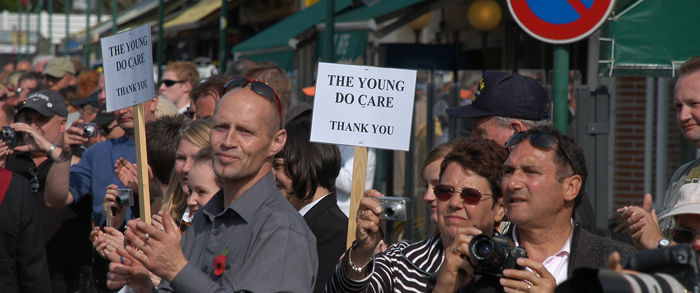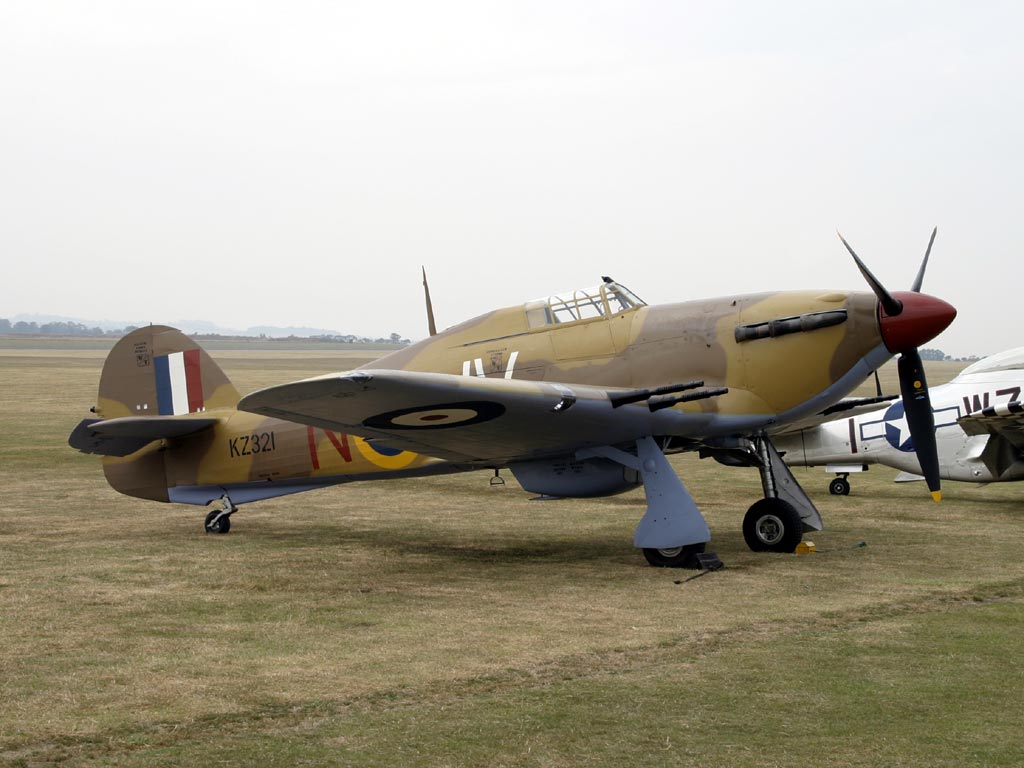 WW2 History of Europe
ww2 history
WW2 History of Europe
ww2 history
The 1690 Flt Unit left from an unknown RAF station at 1945-03-09 at an unknown time. Loc or duty ?
Listing Details
Description
On Friday 09 March 1945, a member of the 1690 Flt Unit, Flying Officer S F Parlato, took off from an unknown RAF station in the United Kingdom. His mission is mentioned elsewhere on WW2 History Europe. You can find the other details of this mission by searching here. Training and cargo flights are not separately mentioned as a mission. The plane left at an unknown time .He flew with a Hawker Hurricane (type IIc , serial PZ740, code -).
Campaign report of the USAAF:
9 March 1945
STRATEGIC OPERATIONS
(Eighth Air Force):: 2 missions are flown.
Mission 875: 1,045 bombers and 443 fighters are dispatched to hit marshalling yards and industrial plants in Germany; they claim 0-0-2 Luftwaffe aircraft; 7 bombers are lost:
1. 423 B-17s are sent to hit the Ost (150) and Main (222) marshalling yards and a casting plant (38) at Frankfurt visually and using Micro H, H2X radar and smoke markers; 6 B-17s also fly a screening mission; 3 B-17s are lost, 1 damaged beyond repair and 182 damaged; 7 airmen are WIA and 28 MIA.
Escorting are 94 of 101 P-51s; they claim 0-0-1 aircraft in the air.
2. 318 of 336 B-17s attack the marshalling yard and a large tank factory at Kassel visually; 6 other B-17s fly a screening mission; 3 B-17s are lost, 2 damaged beyond repair and 188 damaged; 4 airmen are WIA and 28 MIA.
The escort is 97 of 99 P-51s; 1 is damaged beyond repair.
3. 282 B-24s are sent to bomb marshalling yards at Munster (97), Rheine (93) and Osnabruck (87) using Gee-H and H2X; 1 B-24 is lost and 52 damaged; 1 airman is WIA and 12 MIA.
47 of 51 P-51s escort.
4. 4 B-17s fly a scouting mission.
5. 141 P-47s and P-51s fly a freelance sweep in support of the bombers; 1 P-51 is damaged beyond repair.
6. 27 P-51s fly a scouting mission.
7. 15 P-51s escort 12 F-5s and 3 Spitfires on a photo reconnaissance mission over Germany; they claim 0-0-1 aircraft in the air.
Mission 876: 11 B-24s drop leaflets in the Netherlands, France and Germany during the night; and 2 of 9 B-24s fly CARPETBAGGER missions.
TACTICAL OPERATIONS
(Ninth Air Force): In Germany, 600+ A-20s, A-26s and B-26s hit 6 marshalling yards, storage and vehicle depots, ammunition-filling plants, and 12 targets of opportunity as part of the interdiction campaign; fighters fly armed reconnaissance, hit special targets, cover the Remagen bridgehead and support the US 9th Infantry and 9th Armored Divisions committed there, support the 4th Armored Division at the Mosel River bridge at Treis, the XX Corps along the Mosel and Saar Rivers, and the XVI Corps along the Rhine River near Wesel.
The 125th Liaison Squadron, IX Fighter Command [attached to the XXIX Tactical Air Command (Provisional)], moves from Maastricht, the Netherlands to Monchen-Gladbach, Germany with L-5s; and the 153d Liaison Squadron, IX Tactical Air Command (attached to Twelfth Army Group), moves from Spa, Belgium to Duren, Germany with L-5s.
10 March 1945
STRATEGIC OPERATIONS
(Eighth Air Force):: 3 missions are flown.
Mission 877: 1,374 bombers and 670 fighters attack rail targets in Germany by PFF methods; they claim 2-0-1 Luftwaffe aircraft; 2 P-51s are lost:
1. 376 B-24s are dispatched to hit the rail viaducts at Arnsberg (115) and Bielefeld (114) and the marshalling yard at Paderborn; 10 hit the secondary target, the marshalling yard at Bielefeld; 1 B-24 is damaged.
The escort is 146 of 155 P-51s.
2. 526 B-17s are sent to hit the Sud (109), Erfeld (111) and Eving (153) marshalling yards at Dortmund and the Soest marshalling yard (138); 3 other B-17s fly a scouting mission; 1 B-17 is damaged beyond repair and 44 damaged; 2 airmen are WIA.
Escorting are 152 of 158 P-51s; 1 is damaged beyond repair.
3. 457 B-17s are sent to hit the Sinsen (89) and Coesfeld (38) rail crossings and the marshalling yards at Schwerte (116) and Hagen (41); 136 hit the secondary, a marshalling yard at Dortmund; 33 others hit Hamm, a target of opportunity; 26 B-17s are damaged; 1 airman is WIA.
98 of 100 P-51s escort; 2 P-51s are lost.
4. 12 B-17s fly a screening mission.
5. 144 P-47s and P-51s fly a freelance support mission for the bombers; they claim 2-0-1 aircraft in the air.
6. 72 of 74 P-51s escort Ninth AF bombers on their strikes.
7. 27 of 28 P-51s fly a scouting mission.
8. 5 P-51s escort 7 F-5s and 4 Spitfires on a photo reconnaissance mission over the Ruhr.
Mission 879: 13 B-24s attack the marshalling yard at Munster during the night without loss.
Mission 880: 12 B-24s drop leaflets in France, the Netherlands and Germany during the night without loss.
The 857th Bombardment Squadron (Heavy), 492d Bombardment Group (Heavy) (attached to 1st Air Division) moves from Harrington to Bassingbourne, England with B-24s (the 857th begins flying weather reconnaissance missions today).
TACTICAL OPERATIONS
(Ninth Air Force): In Germany, 383 A-20s, A-26s and B-26s strike 5 marshalling yards, a communications center, 2 city areas, miscellaneous targets in the Koblenz-Braubach area, and a target of opportunity; Eighth and Ninth AF fighters escort the bombers, attack ground targets, fly patrols, armed reconnaissance, and provide cover and ground support over the Remagen bridge area where the US 9th Infantry Division expands it's bridgehead against fierce opposition, support the 4th Armored Division in the Koblenz area and the XX Corps in the Saarburg area, and cooperate with the XVI Corps near Wesel.
The 33d Photographic Reconnaissance Squadron, 363d Tactical Reconnaissance Group, moves from Le Culot, Belgium to Venlo, the Netherlands with F-5s.
11 March 1945
STRATEGIC OPERATIONS
(Eighth Air Force):: 2 missions are flown.
Mission 881: 1,256 bombers and 814 fighters are dispatched to make H2X radar attacks on U-boat yards at Kiel and Bremen and the shipyard and refinery area at Hamburg, Germany; 1 B-17 and 4 P-51s are lost:
1. 344 of 352 B-24s attack the Krupp Germania U-boat yard at Kiel; 2 B-24s are damaged.
232 P-47s and P-51s escort; 1 P-51 is lost.
2. 469 of 485 B-17s hit the Wilhelmsburg oil refinery at Hamburg; 1 other hits a target of opportunity; 1 B-17 is lost and 41 damaged; 3 airmen are WIA and 10 MIA.
Escorting are 252 of 265 P-51s; 2 are lost.
3. 406 of 413 B-17s hit the Deschimag U-boat yard at Bremen; 9 B-17s are damaged.
237 of 255 P-51s escort; 1 is lost.
4. 6 B-17s fly a screening mission.
5. 18 P-51s escort 6 F-5s and a Spitfire on photo reconnaissance missions over Germany.
6. 27 of 29 P-51s fly a scouting mission.
Mission 882: 11 of 12 B-24s drop leaflets in the Netherlands and Germany during the night without loss.
TACTICAL OPERATIONS
(Ninth Air Force): In Germany, 696 A-20s, A-26s, and B-26s, hit 4 airfields, 3 communications centers, 2 ammunition filling plants, and several city areas and other casual targets; these attacks are to obstruct air operations and supply and troop movements in general; fighters fly patrols and armed reconnaissance, escort the bombers, support the US 9th Infantry Division push at the Remagen bridgehead and fly cover over the area, and support the XX Corps E of Trier and Saarburg.
HQ 363d Tactical Reconnaissance Group and the 160th and 161st Tactical Reconnaissance Squadrons (with F-6s) and HQ 373d Fighter Group move from Le Culot, Belgium to Venlo, the Netherlands; the 72d Liaison Squadron, Ninth AF (attached to Sixth Army Group), moves from Epinal to Buhl, France with L-5s.
Campaign report of the RAF:
8/9 March 1945
312 aircraft - 241 Halifaxes, 62 Lancasters, 9 Mosquitos - of Nos 4, 6 and 8 Groups attacked Hamburg. 1 Halifax lost. The purpose of this raid was to hit the shipyards which were now assembling the new Type XXI U-boats, whose parts were prefabricated in many parts of inland Germany. Thanks to the Schnorkel breathing tube and a new type of battery-driven electric engine, the Type XXI could cruise under water for long periods and was capable of bursts of high speed. Its development in numbers would have posed great problems for Allied convoy defence if the war had lasted longer. The Hamburg area was found to be cloud-covered and the bombing was not expected to be accurate enough to cause much damage to the shipyards.
262 Lancasters and 14 Mosquitos of Nos 1 and 8 Groups carried out the first large raid on Kassel since October 1943; it was also the last large RAF raid on this target. 1 Mosquito lost. This target was also covered by cloud.
39 Mosquitos to Berlin, 33 to Hannover, 7 to Hagen and 5 each to Bremen and Osnabrück, 50 RCM sorties, 36 Mosquito patrols, 23 Halifaxes and 14 Lancasters minelaying in the Rivers Elbe and Weser, 5 aircraft on Resistance operations. 1 RCM Halifax lost. The 5 Stirlings of No 161 Squadron, which were carrying supplies to Resistance units at unrecorded destinations, but probably in Denmark and Norway, were the last Resistance operations flights of the war.
Total effort for the night: 805 sorties, 3 aircraft (0.4 per cent) lost.
9 March 1945
159 Lancasters of No 3 Group bombed the North and South plants of the Emscher Lippe benzol plant near Datteln. The target area was cloud-covered and G-H was used. The bombing appeared to be accurate but no results were seen. 1 Lancaster lost.
21 Lancasters and 2 Mosquitos of No 5 Group set out to bomb the Bielefeld Viaduct but the raid was abandoned because of low cloud.
9/10 March 1945
92 Mosquitos to Berlin and 16 Mosquitos on nuisance flights over Bremen, Hannover, Osnabrück and Wilhelmshaven, 29 RCM sorties, 12 Mosquito patrols, 21 Halifaxes minelaying in the Kattegat and off Oslo. No aircraft lost.
With thanks to the RAF and USAAF.net!
This record can also be found on the maps of WW2 History Europe with Google coordinates. You can find the maps by clicking on this link on this location.
There are several possibilities to investigate the flight records on WW2 History Europe. All the flights are plotted on maps, sorted "day by day", "by squadron", "by type aircraft", "by year or month", "by location" and much more! Don't miss this!!!
If you have any information that you want to share, please add your comment at the bottom of this record. Or send your information to info@ww2history.eu. This information will be added to the record.
Your photos and your information are very welcome! The young do care and with your help we keep up the good work.


